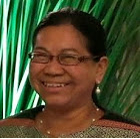Legal protection of IDPs: Follow-up questions
On 21 February, PHAP hosted an online learning session on the legal protection of internally displaced persons (IDPs) with over 300 online participants. The event featured the presentations of two PHAP members: Cecilia Jimenez, recently appointed Special Rapporteur on the Human Rights of Internally Displaced Persons (IDPs), and Jean-François Durieux, with a 30-year career with UNHCR followed by research and teaching positions.
Participants were provided with an introduction to the main legal frameworks protecting IDPs and to the Special Rapporteur’s mandate and new challenges, followed by an opportunity to ask questions after each presentation (you can listen to this in the event recording). As there was not time to answer all questions live during the event, they have also answered follow-up questions in writing, which you can now read on this page.
“What legal mechanisms are in place for climate change-related IDPs in post-conflict/peaceful countries such as India?”
- PhD student, Academia, UK

Jean-François Durieux
From an international law point of view, the definition of an IDP contained in the Guiding Principles on Internal Displacement (GPID) from 1998 is what matters. According to this definition, an IDP is a person forced to abandon his/her home as a result not only of armed conflict or violence, but of any natural or human-made disaster. This definition can therefore cover the populations you have in mind. Whether the domestic legislation of India foresees any special status for IDPs is another matter – you may wish to check this out.
“Which justice mechanisms would you advise for IDPs relating to housing, land and property rights? Do you think collaborative dispute resolution is an option?”
- Legal officer, Nigeria

Jean-François Durieux
The main legal reference in this respect are the so-called "Pinheiro Principles." This handbook on Housing and Property Restitution for Refugees and Displaced Persons may be useful to understand how these principles can be implemented. Collaborative dispute resolution is definitely an option, particularly where the homes of IDPs have been seized and occupied by others.

Cecilia Jimenez
The IASC Framework on Durable Solutions for IDPs also has useful standards with regard to housing, land, and property (HLP) within the context of achieving durable solutions.
“Do the 1998 Guidelines (and the Kampala Convention) provide any guidance regarding the protection of victims of trafficking who are forcibly displaced within their countries (about 42% of human trafficking is domestic)?”
- Information analyst, INGO, Switzerland

Jean-François Durieux
When trafficking results in forced displacement within the same country, the Guiding Principles do apply – the IDP definition is broad enough to accommodate this situation. However, there is nothing in the GPID or the Kampala Convention that relates specifically to the protection needs of trafficked IDPs. A more specific protection can be found in instruments that deal with anti-trafficking, such as the Palermo Protocol, articles 6-8. Look at Art. 8, which obliges states to facilitate the repatriation of the victims in safety and with dignity – this article refers to international trafficking, but the same principle applies to facilitating the return – in safety and with dignity – of victims who have never left their country.
“What are your thoughts on the issue of 'internal flight or relocation alternative'? For instance, many criticized that this principle is being used by European States in order to exclude asylum seekers from Afghanistan and Iraq from refugee status arguing that they could be in safety by displacing internally within their countries, encouraging internal displacement rather than seeking international protection abroad. Would you say that States resort to this principle without properly assessing the situation in the countries/ regions? Is this a problem in Afghanistan and Iraq today? Should economic and social conditions be given a greater weight when assessing 'internal flight or relocation alternative'?”
- Human Rights student, Academia, Ireland

Jean-François Durieux
You are absolutely right, and the UNHCR guidelines on the subject are designed to put strict limits on the application of the ‘internal flight alternative’ as a bar to refugee status. To send an asylum-seeker back to, say, Afghanistan, in the knowledge that he or she will become an IDP upon return is unacceptable.
“Where a State has demonstrated no willingness to protect IDPs, or it is even the cause for displacement, what can be the role of other stakeholders – NGOs, CSOs, humanitarian actors, international community, etc. – in providing protection to IDPs, even when it overrides the desire/ sovereignty of States?”
- Legal assistant, Jordan

Jean-François Durieux
This is a very broad and complex question! If the IDPs are under the control of the State, and the State fails to protect them adequately, all human rights and humanitarian actors must strive to persuade the State to change its policies and/ or practices. Sometimes the first step consists in "forcing" the State to acknowledge the problem, i.e. to give visibility to the plight of IDPs in the country. If you wish to explore further the meaning and contents of ‘protection’ as an activity of humanitarian actors, I encourage you to read the following guides:

Cecilia Jimenez
The protection of IDPs is the PRIMARY responsibility of States within whose borders and under whose jurisdiction IDPs fall under. It is therefore very important that the relevant State is persuaded to provide such protection, and also to be brought to task for its failure to do so. I also encourage stakeholders to provide opportunities for the IDPs themselves to fully participate – politically, socially – in organizing themselves so that they themselves will have the capacity to demand State protection.
“Pakistan has no national policy regarding IDPs, however, based on the Guiding Principles on Internal Displacement, there is an agreed framework through which IPDs have the rights to registration, assistance, de-registration and return. After several years of displacement, returns to the cleared areas are still ongoing (75% of the returns have already taken place). The government seems to be in a hurry to re-settle them and is announcing the dates for returns before the security and returns assessment can be conducted. For instance, the current number of de-registrations is higher than the one provided by UNHCR. How can this be addressed?”
- Humanitarian affairs officer, UN system, Pakistan

Jean-François Durieux
I am afraid you are better placed than I to find out what can be done in this particular situation... Obviously, the government must be persuaded to put the safety of the returnees first. If the government proceeds to return IDPs to a particular location before the security assessment has been conducted, it is probably not sufficient (though it is necessary) to protest: if at all possible, the UN should insist on accompanying the returnees and monitoring their safety and other circumstances in situ over a period of several weeks or months; and the government must make a commitment to the effect that, if danger persists in the area of return, the returnees will be evacuated (again).
“The role of national human rights organizations is very important to monitor the violations of IDP rights; however, their role is often disregarded. Cecilia, what is your strategy to work more inclusively with such organizations?”
- Program funding coordinator, INGO, DRC

Cecilia Jimenez
Yes, human rights organizations themselves have to be brought more into the picture not only for monitoring IDP rights violations, but also for enabling conditions for the IDPs and the communities to understand human rights standards as they apply to IDPs. Same with National Human Rights Institutions (NHRIs), whose independent and impartial role should be enhanced in regard to IDP protection. My approach would be to encourage these types of actors to engage with internal displacement situations and with the IDPs themselves. In my previous experience, when you have IDPs empowered with human rights awareness, and with the necessary tools to assert their rights, they have a greater capacity to claim for State responsibility in practical terms.
“In some conflicts, internal displacement has been used as a tactic of war, justifying violations of IHL by accusing civilians of acting as terrorists. What is the strategy to address this in terms of advocacy and engagement with states in order to prevent displacement or encourage protection during displacement?”
- Protection coordinator, INGO, Lebanon

Cecilia Jimenez
First of all, the use of internal displacement as a deliberate tactic of war is by itself a violation of IHL. Preventing displacement is a primordial responsibility of the State and, in some cases of conflict, also of non-state armed groups. We need to call for accountability for such IHL violations.
Second, we need to continuously emphasize protection of civilians based on distinction as per IHL. While internal displacement may be justified by military necessity and proportionality (though not as a deliberate tactic of war), protection of civilians remains primordial, and all necessary precautions and responses to minimize the effects of internal displacement will need to be taken. This is also why humanitarian access by third parties to IDPs and to those caught in conflict is very important.
“Could you explain more about the Special Rapporteur’s strategies and actions to promote accountability among States regarding their obligations to protect IDPs?”
- Program funding coordinator, INGO, DRC

Cecilia Jimenez
One tool provided to the Special Rapporteur by the UNHRC resolution is the use of dialogue with States and her engagement with the authorities. The Special Rapporteur intends to use these tools as much as possible. Country visits are an important way to enter into these dialogues and would authorize reporting to the UNHRC. Moreover, in order to promote accountability, the Special Rapporteur will continue as a matter of priority the promotion of national IDP laws and/ or policies for national implementation. Much has been gained in this respect, but much, much more needs to be done in order to have these laws/ policies in place as well as their implementation.
“For instance, in Nigeria, there is a high number of IDPs outside camps. Cecilia, is the protection of IDPs in such a special vulnerable situation a priority within your mandate? Do you work directly with NGOs to assist and protect IDPs outside camps?”
- Local NGO officer, Nigeria

Cecilia Jimenez
Definitely, the protection of IDPs including those outside of camps is, of course, a priority. In fact, having been to Nigeria before, I am aware of the increasingly vulnerable situation of these “out-of-camp” IDPs. In addition, my predecessor has in fact been to Nigeria in one of his last country visits and we look forward to his report to the UNHRC this June 2017. In his report on Nigeria, he has made some very important recommendations to Nigeria, and I intend to keep these within my radar as far as monitoring is concerned, and when working with stakeholders, including NGOs, for implementation.
“Cecilia, you mentioned that one of your new priorities will be the protection of internally displaced children. Will you explore the differences that IDP boys and girls face? Too often children are grouped together without recognizing their specific and different needs.”
- Information analyst, INGO, Switzerland

Cecilia Jimenez
Thank you for this reiteration! Definitely! Much of the violence and the vulnerabilities of children are defined by their biological sex. Perhaps if you are working on this specificity, you would help provide some information and data that would be helpful in my mandate.
You can access the rest of the Q&A as well as further resources on the event page.
If you have any further questions for Cecilia Jimenez, she can be contacted at [email protected].